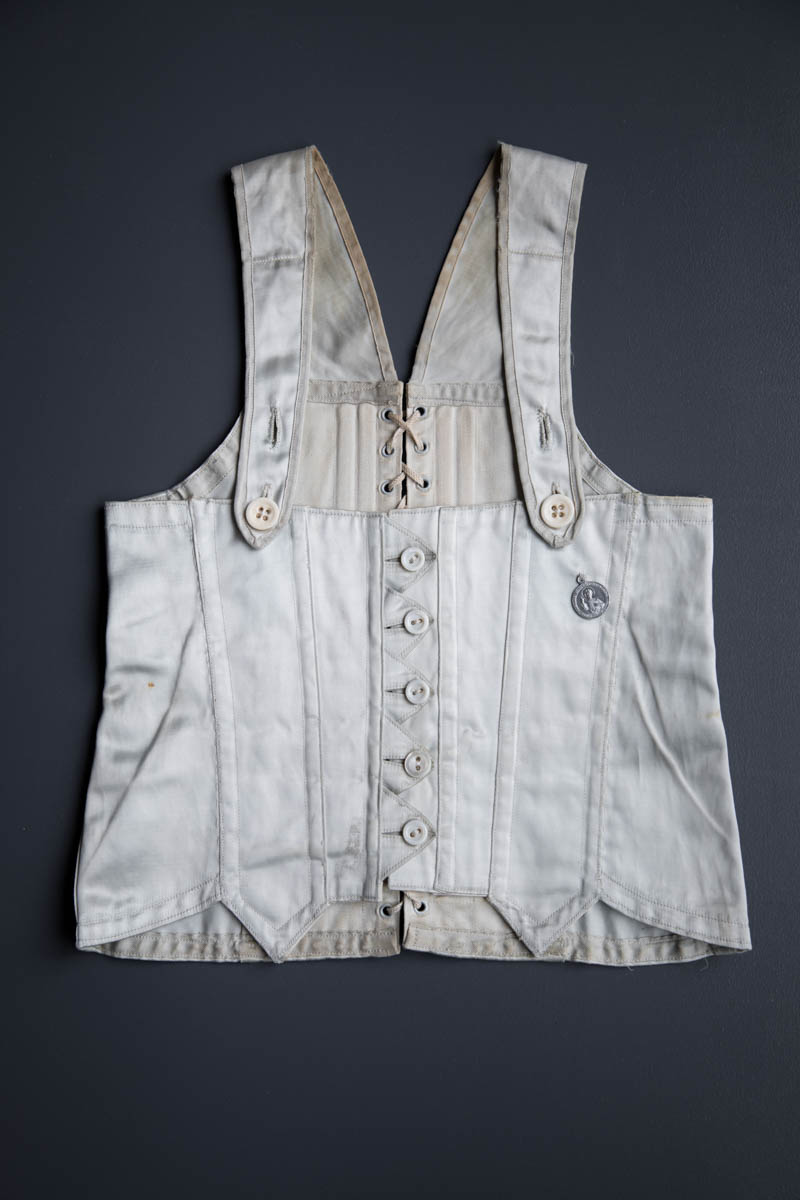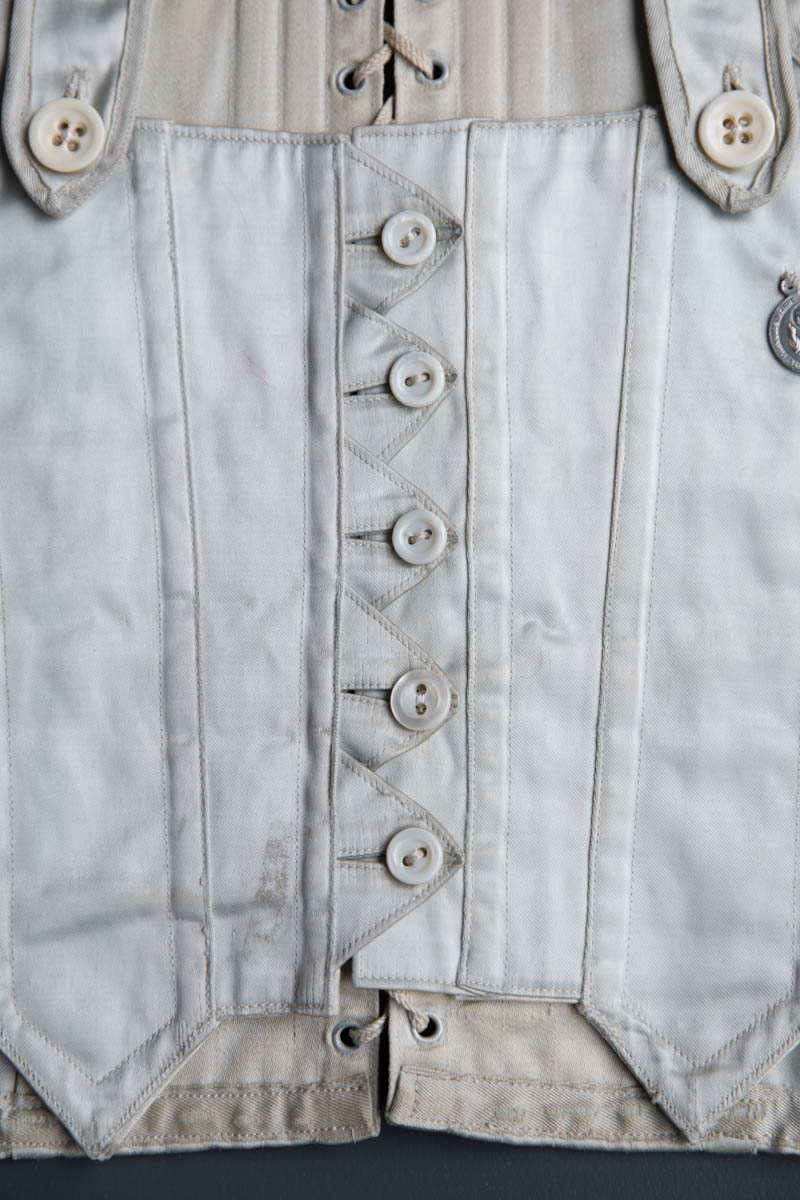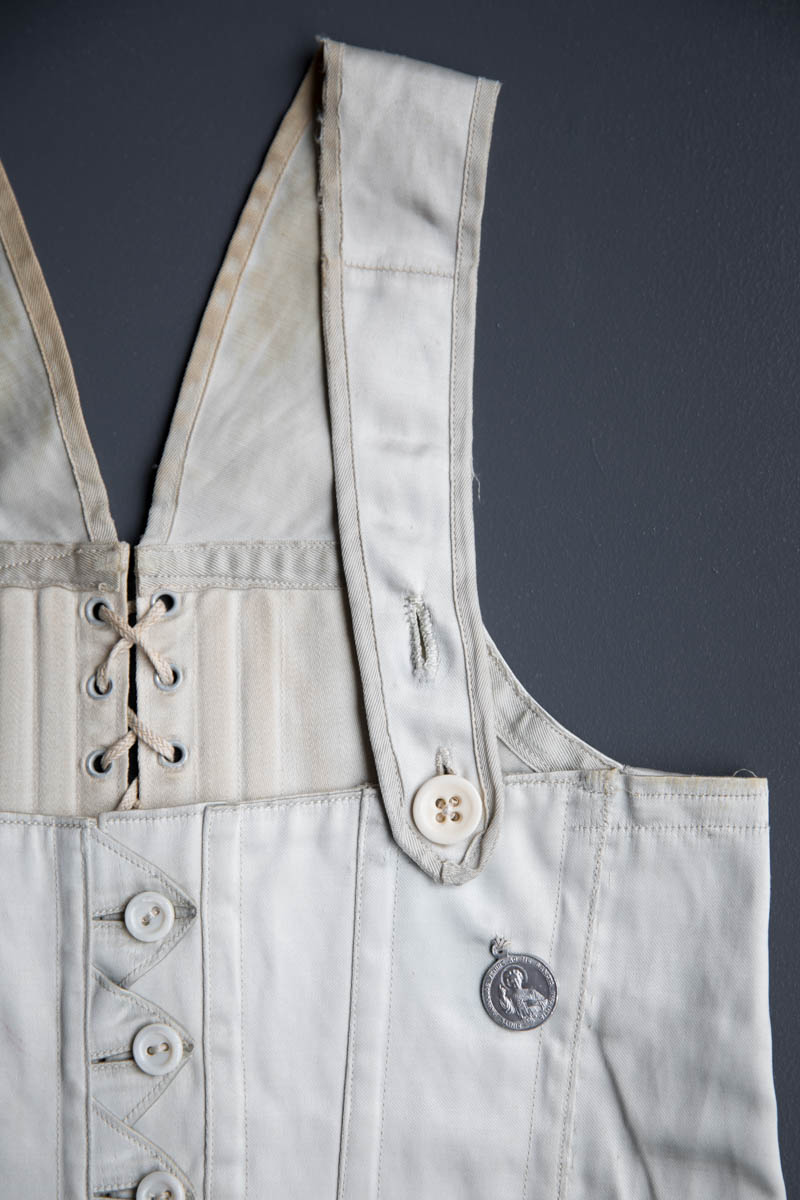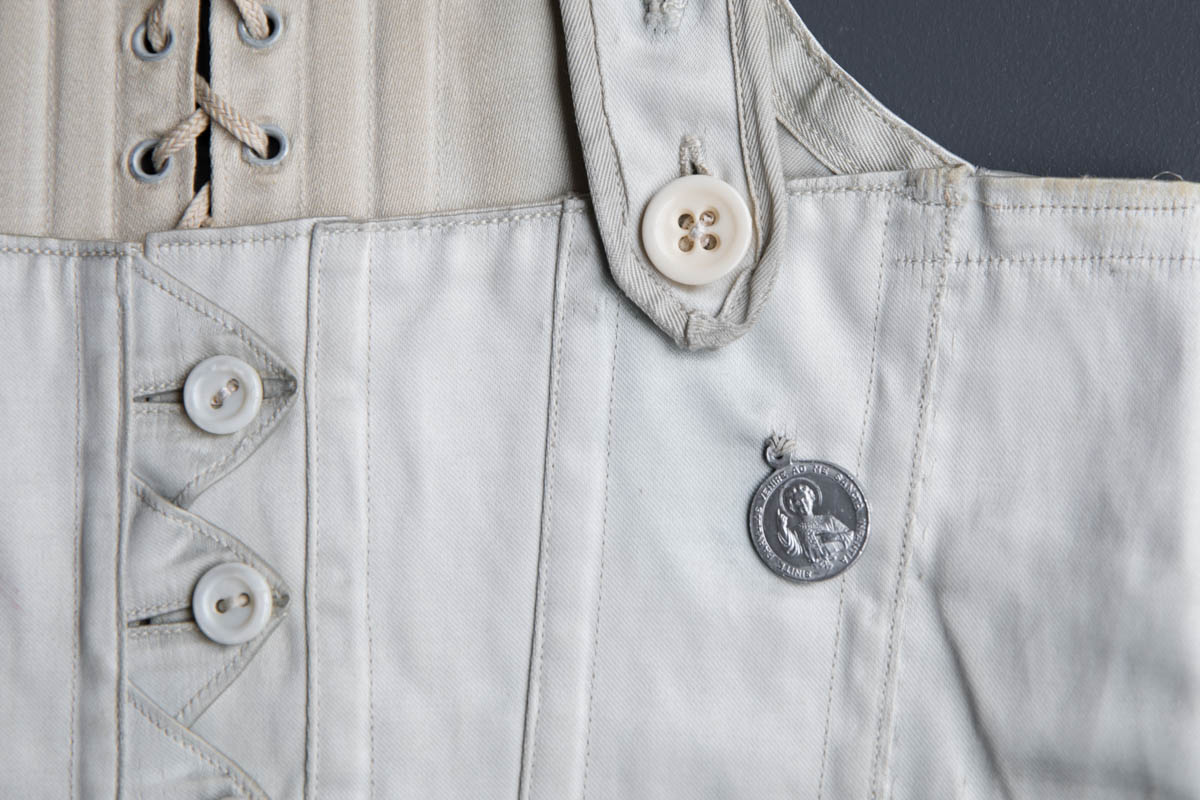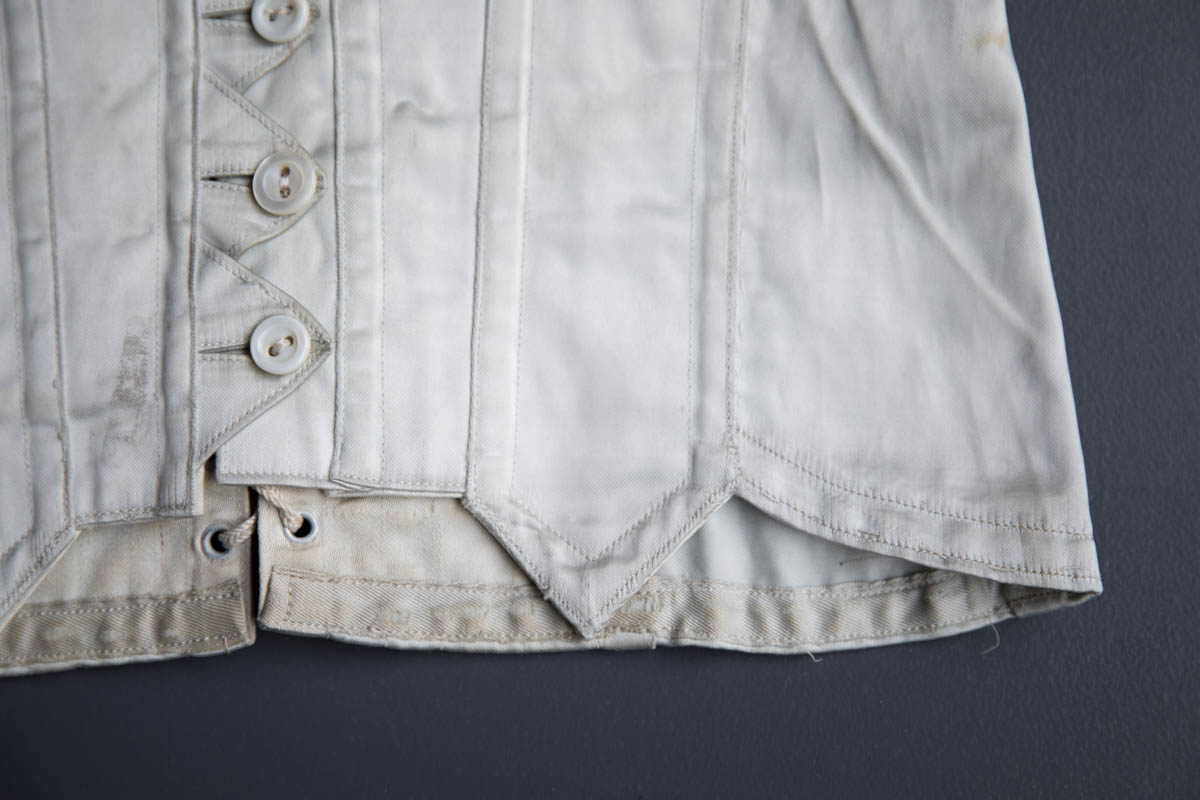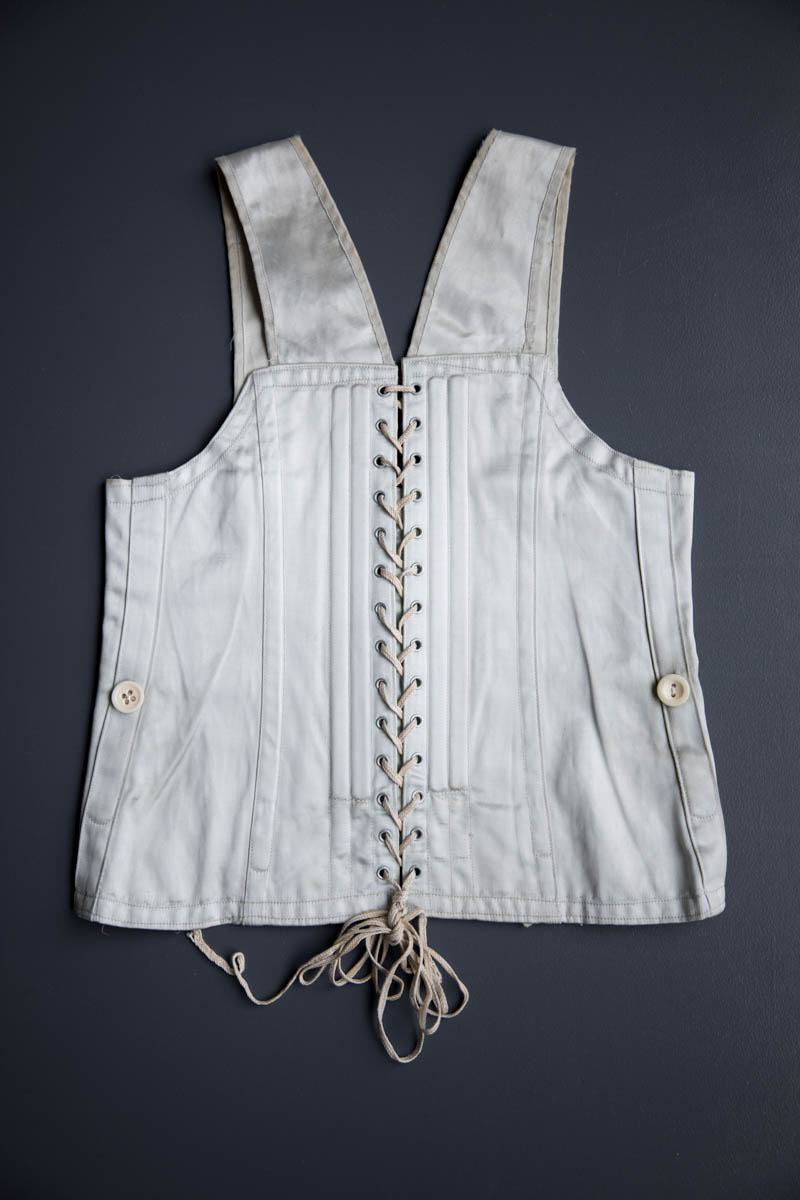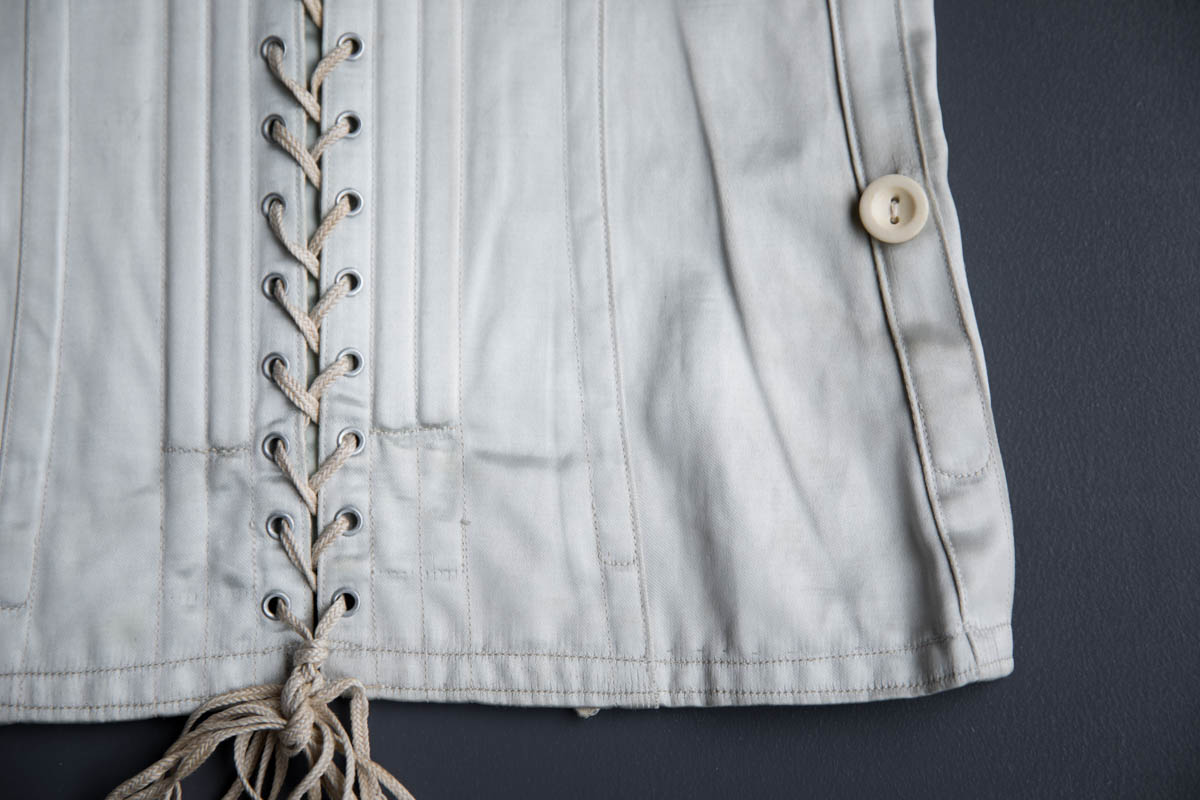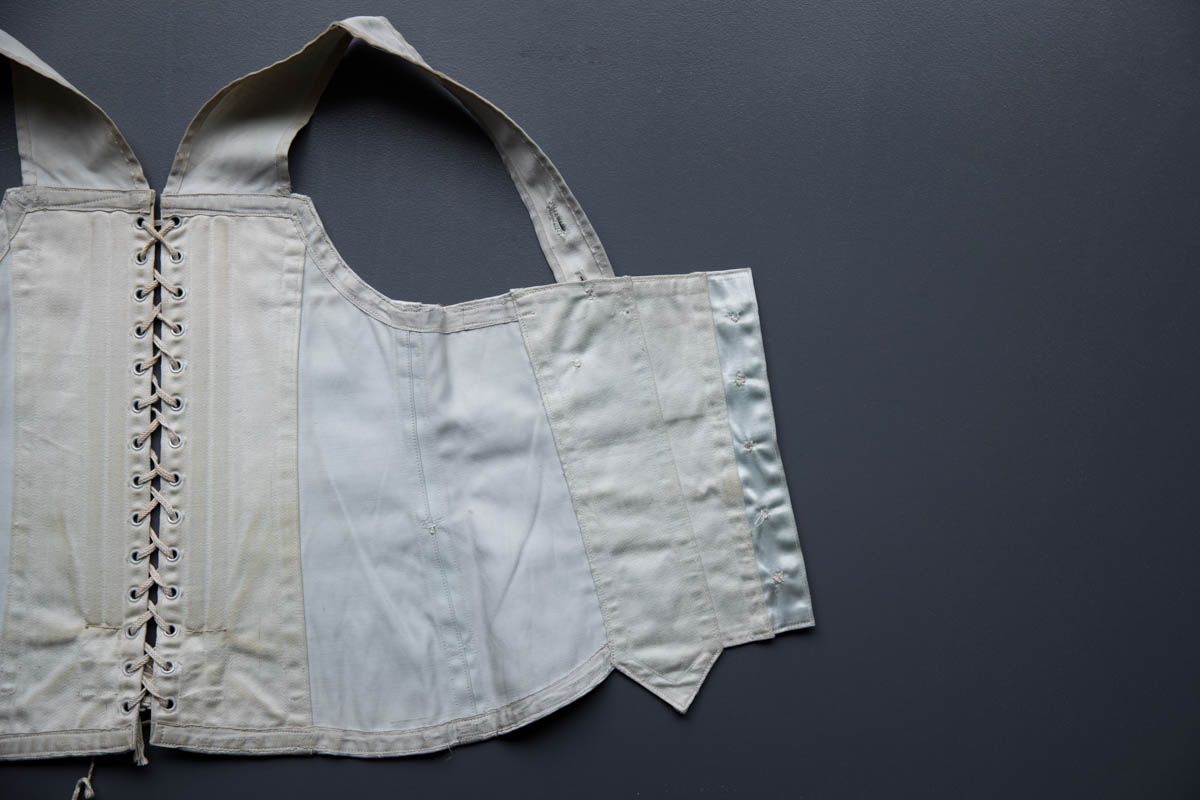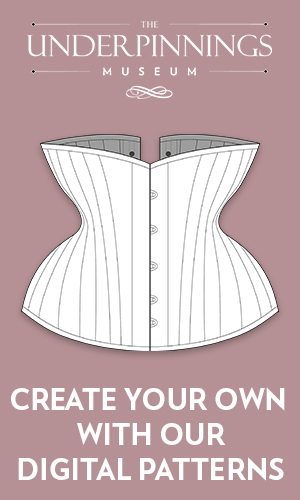Date: c. 1930s
Origin: USA
Fabric: Rayon satin, cotton twill
Brand: Unknown
A corset intended for children in ice blue rayon satin, lined with cotton twill. This garment was intended as a supportive piece of foundationwear (echoed by the fact that it fastens with buttons, a fastening method that cannot accommodate any serious level of body shaping), intended to support the back and provide insulation. It was not worn as compression shapewear, and did not reshape the body in any way.
The corset is lightly structured, with only a few bones at the centre back to re-enforce the lacing panel and aid the wearer in maintaining good posture. The design features several areas of adjustability, to ensure that the garment could be comfortably altered as the child grew. The back fastens with cotton lacing through metal eyelets, and the shoulder strap length can be adjusted with bone buttons and button holes. There are additional buttons stitched to the back hip of the garment, presumably to help secure clothing worn over the corset.
There is a medallion stitched to the left breast of the corset, with the image of Jesus Christ as a child, and the Latin inscription ‘sancta infantia sinite parvulos venire ad me’, translating approximately as ‘holy infant, let the little ones come to me’, a biblical quotation. This was likely intended as a superstitious means of offering the wearer additional protection.
Corset style garments were worn by all genders and ages for much of history. Such garments were intended to offer support and additional warmth, rather than the popular skewed view of purely altering the body to a fashionable shape. A less structured example of this style, although still fulfilling the same purpose, was the ‘Liberty Bodice’, introduced by R & W H Symington in 1908.
From the collection of Karolina Laskowska

